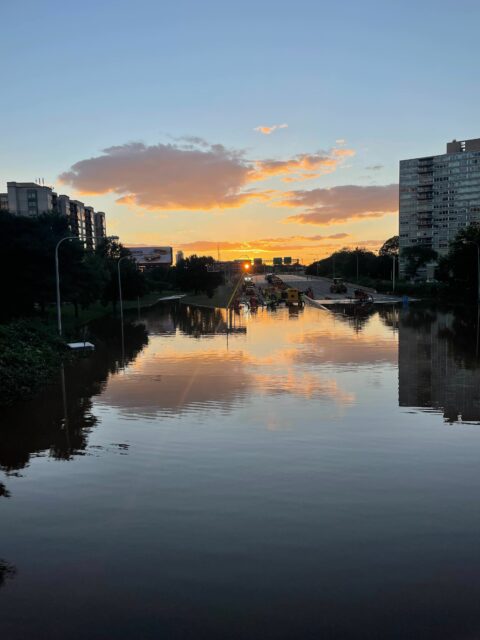
Hurricane Ida made landfall in Louisiana in late August, creating a chain of destruction that stretched more than a thousand miles into the Northeast. Ida washed through Delaware, New Jersey, New York and Pennsylvania leaving at least 50 people dead and over $16 billion in damages. Residents in the region awoke to flooded homes, days without power and roadways turned to rivers.
Since then, communities in the Delaware River Watershed have picked up the pieces. But Ida is merely an omen of what’s to come. Climate change is here, and with it come storms that promise to be more frequent and intense.
Ida’s wreckage was exacerbated by outdated infrastructure unable to handle severe storms. River banks and drainage systems across the Northeast were overwhelmed; leaving rural roads and city subways submerged. “Many systems simply weren’t made to process the amount of water that moved through the region, says Ellen Kohler who works for the Environmental Finance Center at the University of Maryland.
“In general, combined sewers are designed to send both stormwater and wastewater to the water treatment plant before being released back to rivers and streams,” says Kohler. “With the increase in climate-driven storms in the mid-Atlantic, systems can’t cope. More and more sewage-laden stormwater is flooding our waterways and our neighborhoods.”
While families faced damaged homes and flooded neighborhoods, other harms from storms like Ida are less apparent. “If not sufficiently restored, homes with flood damage can become havens for mold that impacts human health,” explains Kate Hutelmyer of the Partnership for the Delaware Estuary.
Perhaps the least visible threat is to our river system itself. The Delaware River Watershed supports a delicate balance of wildlife and plant life, and ultimately, the quality and affordability of drinking water for more than 15 million people. Repeated, toxic flooding throws that into jeopardy.
“Any industrial site near our rivers that gets flooded could mean that chemicals and toxins get released into the waterway. This kind of flooding can be lethal to important aquatic life that make our waters drinkable, fishable and swimmable,” says Kohler.
For many state and federal decisionmakers, Hurricane Ida was a wakeup call. Infrastructure is at the center of the conversation. Congress responded with an infrastructure bill that included funds for climate resilience projects. Hutelmyer and Kohler say cities and towns in the Northeast need to tap these funds to reduce the amount of impervious cover in our communities—surfaces like driveways, parking lots and rooftops that can’t absorb rainwater. Water doesn’t soak into these surfaces and instead rushes across neighborhoods and pushes sewer systems past their breaking point. A major solution already at work in the Delaware River Watershed Initiative? Boosting green infrastructure.
“Trees, trees, trees,” implores Kohler. “We have to support a culture that values trees – which means working with road, energy and insurance partners to collaborate on better communicating about the value of trees. Street trees, reforestation projects on brownfields, forested riparian buffers, replacing old and diseased trees, funding tree maintenance programs.
These green features can be integrated with existing gray stormwater infrastructure like inlets and pipes. At the same time, harnessing the new funds being made available to improve these older systems is critical. Right now, there are maintenance projects withering on the vine across our entire four state region that could defend against the next big storm.
While moving funding at the local level may require local leadership; understanding the path forward is a regional challenge. States in the Delaware River Watershed are connected. They are all neighbors affected by how other communities manage their water. Stakeholders can and must learn to think at the “watershed scale” that considers how community actions upstream and downstream impact one another
“There are lots of actions that we need to consider but if those actions don’t happen in a coordinated strategy, their impacts will not be as meaningful as they could be,” says Kohler.
Hutelmyer also adds: “Justice is paramount. We need to ensure that, when money is on the table for climate resiliency work, the people most impacted—who are often those most marginalized—get to say how it’s distributed. True resilience can’t leave anyone behind.
There are many moving parts in making the watershed more resilient. Avoiding these talks and plans isn’t an option though. Hurricane Ida has pressed elected officials to consider what matters. Areas that were typically safe are now seeing significant flooding while flood prone areas are only getting worse. Action is needed now, says Hutelmyer.
“Climate change isn’t a threat looming on the horizon, it’s already here.”